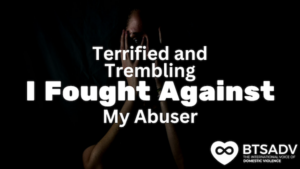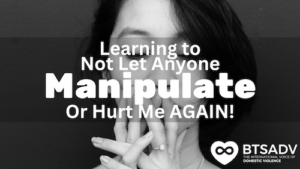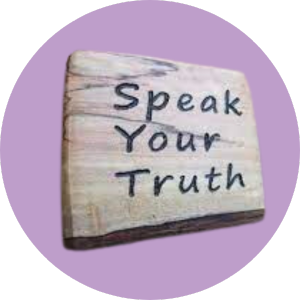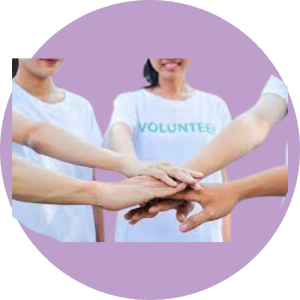Leaving abusive relationships may not immediately equate to true healing or good mental health. True healing and stability occurs from the inside out.
Lack of Stability After Abuse
According to Ham-Rowbottom et al. (2005), up to 75% of women receiving emergency or transitional living shelter experience depression, trauma, and low life satisfaction after leaving their abuser; they continue to suffer from depression up to 6 months after leaving such shelters (Campbell et al. 1995, 2002; and Houskamp and Foy 1991).
However, domestic violence survivors go on to pursue fulfilling, successful lives. They go on to find stability. Take a look at some of the profiles of our amazing BTSADV volunteers, who are also survivors; they are living proof that healing is within all victims’ reach. In fact, they are not survivors; they are thrivers.
Growing from Survivor to Thriver
In her book From Victim to Survivor to Thriver, Barbara Whitfield argues that, after leaving their abusive relationship, individuals go through 3 stages – “victim,” “survivor”, and “thriver” – each being characterized by specific styles of thinking about self, others, and the world (Whitfield 2003). The journey to stability progresses through each stage.
Victim Stage
Individuals in the “victim” stage may experience:
- Low self-esteem/shame/unworthiness
- Hypervigilance
- Feelings of loneliness, selfishness, of being damaged, being overwhelmed about the past
- Confusion and numbness
- Hopelessness
- Desire to hide their story
- The belief that they don’t deserve a better life, that others are better, stronger, and less damaged, that suffering is the human condition
- Habit to place one’s own needs last
- Living in the past
- Anger towards religion
- Suspiciousness of therapists and helpers
- Dependence on people and chemicals to believe they are ok
Survivor Stage
Individuals in the “survivor” stage:
- See themselves as wounded and healing
- Use relaxation tools
- Believe they deserve to seek help, name, and grieve the abuse they went through
- Learn to grieve, processing past ungrieved trauma
- Are hopeful
- Do not feel afraid to tell their story to supportive people
- Hear others’ stories, feeling compassion for others and themselves
- Learn how to protect themselves from abusive people by sharing, checking whether it’s safe to do so, and sharing some more
- Start recognizing they have healthy needs that should be fulfilled
- Feel some relief and acknowledge they need to continue recovering
- Start noticing patterns in their own and others’ behavior as well as the world
- Understand the difference between religion and personal spirituality
- See therapists as guides
- Have glimpses of self-acceptance and fun without other people
Thriver Stage
Individuals in the “thriver” stage may:
- See themselves as an “overflowing miracle”, as wounded but healing
- Can seek help within themselves
- Feel proud of healthy self-caring
- Grieve current losses
- Live in the present
- Have faith in themselves and in life
- Believe that emotional pain will pass and bring new insights
- Do not necessarily tell their story but are aware they are the reason for their own healing
- Live with an open heart for self and others but at the same time protect themselves against toxic people
- Place themselves first, because they realize that’s the only sustainable way to help others
- Find joy in inner peace and have a sense of humor
- Create healthy boundaries around toxic others, including friends and family
- Enjoy a healthy relationship with their personal religious beliefs
- Feel gratitude for various things in life, authentic, connected, whole, and very alive
Importance of Understanding the Stages
While each of the above stages may look different for everyone, it’s helpful to keep in mind what each usually involves, so you have a guess as to where you are in your personal healing process and a blueprint of where you may (or may want to) go. It’s also good to remind yourself that although you may be or have been a victim, you can permit yourself to be a thriver. We were all born to shine. So, don’t think of yourself as a victim or a survivor; you are a thriver on the making.
How do we go from “victim” to “thriver”?
The path seems to involve turning new ways of thinking about self and the world into tools that victims can use to independently stabilize their life for the better. Healing means progressively starting to see oneself as a resilient, amazing person and accumulating healthy coping strategies (e.g., relaxation techniques, pushing away toxic people) so that, whenever a crisis hits, thrivers search for that mechanism in their toolbox and use it to get through that crisis. They become tools of stability.
According to Wozniak and Allen (2012), some victims report cultivating relationships in which their sense of self as independent, worthy and unique is restored, in which they feel they can nurture and support themselves is healing.
Nurture and Support Yourself
Therapy, counseling, and less expensive forms of self-care, like hot showers, pretty clothes, fresh juice, and facial creams can remind you that you have the power to do nice things for yourself, to take good care of yourself. Career counseling may help victims acknowledge their rights and ability to envision a new life and help them take specific steps for positive change.
Learning new things that you never thought you’d manage to do, like self-defense techniques, an extreme sport, a challenging online class can help restore faith in your skills and abilities. A change of hairstyle, accessories, clothes, home decoration, eating habits, and Spotify playlist may signal to you that you are about to embark on a promising journey.
For some, drawing, coloring, or painting unlocks repressed thoughts and feelings, dragging negativity out of the mind and heart and onto the canvas. Avid readers or music listeners find comfort in realizing others have managed to beautifully express emotions they couldn’t put into words themselves. Yet others discover a new mode of expression and emotional processing in writing. Spiritual practices, such as yoga and physical exercise or dancing are not only great relaxation tools but also a way to release endorphins (“feel good” hormones).
Putting together a dream board, i.e., a collection of pictures, motivational quotes, and anything that reminds you of your goals and dreams can keep you focused on how bright your future can be. Taking care of yourself helps to keep you centered and focused on stability.
Owning Your Healing Process
You have the power to take charge of your healing process, and you will heal. You will find your stability again. It will be difficult; it will take time, but you will feel happy, empowered, independent, and at peace in time. Set out realistic daily, weekly or monthly goals for yourself, nothing grand, just enough to make you feel you’re making progress. Trust the process, no matter how dim the future may look. In the words of Robert Collier, “success is the sum of small efforts, repeated day in and day out.”
Photo Credit: William Farlow, via Unsplash
References
Campbell, R., C.M. Sullivan, and W.S. Davidson 1995 A Longitudinal Analysis of Depression in Women with Abusive Partners. Psychology of Women Quarterly 19(2): 237–255.
Campbell, J.C., A.S. Jones, J. Dienemann, J. Kub, J. Schollenberger, and P. O’Campo 2002 Intimate Partner Violence and Physical Health Consequences. Archives of Internal Medicine 162(10): 1157–1163.
Ham-Rowbottom, Kathleen A., Erin E. Gordon, Kelly L. Jarvis, and Raymond W. Novaco (2005). Life Constraints and Psychological Well-being of Domestic Violence Shelter Graduates. Journal of Family Violence 20(2): 109–121.
Whitfield, Barbara 2003 From Victim to Survivor to Thriver. Retrieved October, 1, 2010 from http://www.cbwhit.com/Victim-to-survivor.htm.
Wozniak, D. F., & Allen, K. N. (2012). Ritual and performance in domestic violence healing: from survivor to thriver through rites of passage. Culture, medicine, and psychiatry, 36(1), 80-101.









